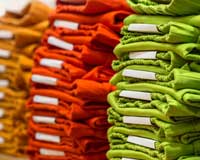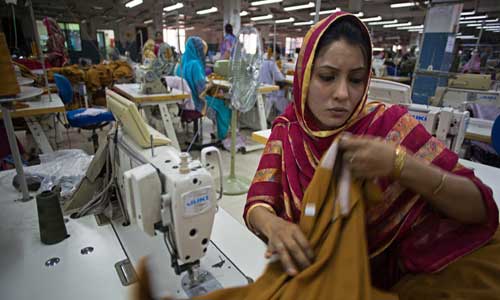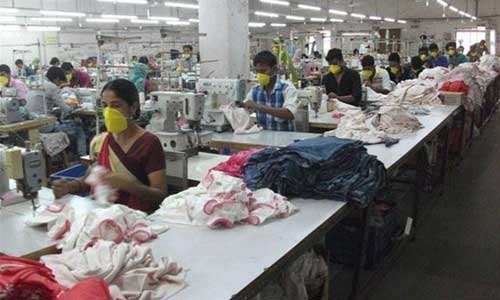FW
In the first eight months of 2017, Vietnam’s textile and garment exports grew 9.9 per cent year on year. The US remained Vietnam’s leading market, accounting for 51 per cent of the market share.
However, Vietnam imports 60 per cent of its fiber as cotton farms in Vietnam have shrunk significantly and meet only 0.04 per cent of the domestic textile sector’s demand. The country is one of the world’s leading importers of fabrics and materials. The shortage of high-quality materials for production is the biggest barrier to Vietnam’s textile and garment industry, hindering the country from taking advantage of free trade agreements.
Vietnam’s textile and apparel sector has set a target of seven per cent growth over 2016. Currently, Vietnamese garment and textile products are available in 40 countries and territories around the world, with major markets including the United States, Japan, the Republic of Korea, China and the EU. Vietnam is one of the five largest textile and garment exporters in the world.
Vietnam's Ho Chi Minh City will build large centers for designing fashion, trading garments, textile material and accessories to become the country’s future garment, textile material and accessory hub. Ho Chi Minh City has set targets of meeting 80 to 90 per cent of Vietnam's demand for garments and textiles by 2020.
Maharashtra is encouraging tussar weavers, a handwoven fabric of Vidarbha. Weavers will be trained for making tussar fabric. Yarn is provided at the weavers' doorsteps who, in turn, make the garments which are marketed by the Maharashtra State Handlooms Corporation (MSHC).
Tussar weaving is a dying art. There are less than a 100 weavers living in the villages of Nagpur and Bhandara districts. Most of them are above 60 years. As their number is fast diminishing, MSHC has started the process to bring forth a new generation of tussar weavers.
Tussar silk is an exquisite thread obtained from a wide winged moth that is yellowish-brown in color. Produced mainly in India, tussar is highly valued for its natural gold colors. The cost difference between tussar silk and other forms of silk arises from the fact that the former is not fed on mulberry.
A lot more textured than mulberry silk, tussar silk is used in the creation of tussar silk saris and silk suits. Indian attire inspired from traditions and values easily take shape in tussar silk. The dull gold texture that it radiates works as a suitable base for embroideries as well as print motifs that have been inspired by nature. Floral patterns as well as those in the shape of trees, buds, leaves and leaflets serve as a source of inspiration for tussar silk.
American fashion retailer, Nordstrom’s net sales increased 2.7 per cent and comparable sales decreased 0.8 per cent, in the first quarter of 2017, compared to the same quarter last year. Founded in 1901 as a shoe store, Nordstrom operates 354 stores in 40 states including 122 full-line stores in the United States, Canada and Puerto Rico; 221 Nordstrom rack stores; two Jeffrey boutiques; and two clearance stores. In fact, a recent study by Market Force Information (Market Force) on 10,000 consumers, revealed Nordstrom continues to rank as the US’ favourite fashion retailer fifth year in a row on parameters of value, atmosphere and ease of finding items. The retailer has built an enviable reputation of having an incomparable customer service and has hence, earned a loyal fan base.
It is a preferred shopping destination for consumers. Every July the retailer has a sale and brings in new styles from highly sought-after brands for men, women and children. It’s the ultimate sale with something for everyone in every category: clothing, shoes, handbags, accessories, home and beauty.
Besides its huge vendor base, a small but growing portion of the overall product offering comes from Nordstrom Product Group (NPG), the retailer’s family of private label brands. In 2016, NPG included 54 brands manufactured in 484 factories across 30 countries. India has the second highest number of vendors in this category with 59 associated factories.
NPG is committed to working with agents, manufacturers, factories and mills to ensure that final consumers obtain compliant private label merchandise. The retailer is also working with two factories in northern India to train factory management and workers on effective communication strategies to increase worker satisfaction.
The union cabinet has given its approval for an ongoing collaborative research project with Japan for developing hybrid and better yielding varieties of silkworms, which would give a big push to the silk industry.
The cabinet approved a memorandum of understanding (MoU) signed between the Central Silk Board (CSB) and Japan's National Institute of Agrobiological Sciences (NIAS) for collaborative research in the field of silkworm and silk industries. The MoU, signed last November between CSB and NIAS provides for collaborative research for developing prolific bivoltine hybrids of silkworm suitable for the Indian tropical conditions.
The MoU is of scientific and technological nature. It would help in developing prolific hybrid silkworms, which would improve the manufacturing capacity and the quality standards of the Indian sericulture industry and thereby enhance exports of silk and silk products, an official release stated.
The release noted that the improvement of quality and productivity would enable the Indian textiles and apparel industry produce world class silk and silk products and ultimately increase the potential for export of silk products.
Cambodia’s exports of garments and footwear rose 7.2 per cent in 2016. The US market accounts for a quarter of the Cambodia’s exports however this share dropped from 29 per cent in 2015 to 25 per cent in 2016. Now there is an emerging sign of strong growth of the garments exports to markets outside the EU and US. Exports to other markets rose 35 per cent in 2016, up from 28 per cent in 2015, and from just 11 per cent ten years ago.
Japan and Canada have grown as important export destinations for Cambodia. Exports to Japan accounted for nine per cent of total garment and footwear exports in 2016, up from 7.7 per cent in 2015 and just 2.7 per cent in 2010, while exports to Canada were nearly eight per cent of market share, up from 7.5 per cent in 2015 and just 0.5 per cent in 2010.
At the same time, exports to China have also been well. The Chinese market accounted for 2.3 per cent of Cambodia’s garment and footwear exports in 2016, up from 1.8 per cent in 2015. Cambodia has free trade agreements with various countries, particularly under the Asean frameworks.
Baldwin Technology Company a world leader in process automation solutions, consumables, and services to the print, textile, and film industries, has reached an agreement to acquire Lauterbach-based Ahlbrandt System GmbH. The acquisition is pending German government approval.
Ahlbrandt’s 87 team members and top-quality corona treatment, spray coating, and hot air drying products complement the Baldwin team and their broad product and service portfolios. In addition, Baldwin plans to capitalise on Ahlbrandt’s expertise and industry leading technology to enhance solutions for the rapidly growing textile and film industries.
Holger Bätz, MD, Ahlbrandt says they are excited to join the Baldwin team. Not only is their expertise in developing and producing top-quality equipment and systems a nice complement to Baldwin’s broad product portfolio. Ahlbrandt’s talent and passion for innovation in surface finishing will rise to new levels within the Baldwin family. This partnership presents a great opportunity for the Ahlbrandt team to expand our business to new geographical markets and customers, this acquisition will have a very positive influence on Ahlbrandt’s new ‘Serviceplus’ growth strategy.
Brent Becker, CEO of Baldwin stated that by bringing Ahlbrandt into the Baldwin family will strengthen their ability to provide value to their customers through broader technology and service offerings. This exciting investment underscores their commitment to a strategy that blends organic and acquisition growth to enhance their global footprint and the technology they can deliver to their customers.
They expect both teams to realise many benefits from close cooperation between their Lauterbach and Friedberg production and assembly facilities and they are also eagerly looking forward to expanding their footprint in Germany.
"While Pakistan’s garment sector can easily drive the country’s economy through exports, it has not been able to fully exploit the benefits of GSP Plus status so far, reveals World Trade Organization data. A recent study by the International Growth Centre highlights the private sector does feel too optimistic about realising the full potential of GSP Plus and has vocally expressed frustration at the challenges that remain."

While Pakistan’s garment sector can easily drive the country’s economy through exports, it has not been able to fully exploit the benefits of GSP Plus status so far, reveals World Trade Organization data. A recent study by the International Growth Centre highlights the private sector does feel too optimistic about realising the full potential of GSP Plus and has vocally expressed frustration at the challenges that remain.

Their biggest concern is continued energy shortfall. In the last few years, the industry has operated below 70 per cent of full capacity due to this deficit. Production costs have also increased as firms employ alternate measures to ensure regular energy supplies. The energy crisis is expected to lessen in coming years as investments on energy projects planned under CPEC materialise. But in the interim, industry continues to struggle to meet production targets.
Not lucrative for investment?
Pakistan’s adverse business climate has been restricting investments in export manufacturing particularly by new EU-based clients. International buyers prefer suppliers from less risky countries, especially where physical engagement with firms is possible. Maplecroft, an international agency that ranks countries according to their investment climate, places Pakistan in the high-risk category. Pakistan fares much worse than Bangladesh on most categories. The report states without a coherent strategy to improve the business environment, the gains of GSP Plus cannot be fully availed.
Issues holding the country potential
Tax regime and custom clearance procedures are some of the burning issues faced by the industry. The industry is faces a higher duty on raw materials compared to other countries, which makes the final product more expensive. Due to cumbersome customs procedures and high duties on the import of artificial fibres and PTA (a raw material for the manufacture of polyester), the garments industry has been unable to move from existing cotton concentrated 80:20 mix to the globally demanded 50:50 mix in its exports.
Ray of hope
On a positive note, GSP Plus status has allowed the garments industry to maintain its export shares even improve them slightly despite the many challenges. The new incentive package for exporters, announced by the Prime Minister in January 2017, may ease some of the tax constraints. There is also some progress towards solving the energy crisis and lowering the tax burden.
But the desired benefit of the GSP Plus status, substantially higher exports, will be realised only when the energy, tax and customs challenges are addressed comprehensively. Improving Pakistan’s business environment will also be key to attracting foreign clients including Chinese investors, given that the Chinese garment industry is relocating to lower-cost developing countries and Pakistan offers the additional advantage of easy access to European markets.
"Ahmadabad’s textile market is worth around $25 billion, contributing nearly 12 per cent to India’s textile exports. It is backed by a strong supply chain from cotton production to textile machinery and now a thriving hub for apparels. As all resources are available close, the city can even quote an extremely fair price to the exporters, which makes it all the more a lucrative proposition."

Ahmadabad’s textile market is worth around $25 billion, contributing nearly 12 per cent to India’s textile exports. It is backed by a strong supply chain from cotton production to textile machinery and now a thriving hub for apparels. As all resources are available close, the city can even quote an extremely fair price to the exporters, which makes it all the more a lucrative proposition.
Managing workforce

While there exists no labour related issues, owing to entrepreneurial nature, some of them start their own job work or small job shops after gaining experience. In lieu of this, companies are doing a commendable job in retaining skilled workforce. For instance, CA Patel Textiles is offering incentives to workers, and also training them to increase productivity. It runs programs in nearby villages to bring labour to the factory apart from offering living space at discounted rates, transportation, etc. Operating for close to 60 years, CA Patel Textiles, entered casual and semi-casual shirt manufacturing just six months before for its own brand ‘Italfic’ with 200 stitching machines. It further plans to install 800 stitching machines in the next two years.
Growing investments
Another manufacturer, Komal Texfab is now diversifying into jeans and ethnic wear manufacturing with an investment of nearly Rs50 crore. It is also going to double its circular knitting capacity which is currently 200 tonnes per month. Globe Textiles India, manufacturing two lakh jeans (majorly basic as well as semi-fashionable) for the Indian and the overseas market, is also increasing its stitching capacity. Kolkata based brand, AppleEye recently tied up for 25,000 garments per month with one such Ahmedabad-based company. Two years old, Bubble Bee Export House, which had seen 200 per cent growth last year, is in the process to install 250 stitching machines.
As a stakeholder says garmenting was already there in Ahmedabad but it was majorly for the domestic and unorganised market. However, for last few years, it is growing in an organised manner. There are hardly any big exporters in India who do not take fabrics/printing support from Ahmedabad, so they tend to have a fair idea about the fabric required for export.
Swapnil Patel, Director, CA Patel Textiles, highlights the positive business environment, good infrastructure such as electricity are driving factors for companies to venture into apparel business. Having an annual business of Rs. 300 crores, the company is expecting 30 per cent growth. The focus has shifted towards apparel with capacities enhanced at the fabric level and now companies want to cover the entire value chain.
Enhancing visibility
While things are moving at the right pace, the industry feels bringing overseas buyers to Ahmedabad is comparatively difficult. However, events like Textiles India help in this regard. Stakeholders say now companies should focus on attracting buying houses from Delhi-NCR and Bengaluru to visit Ahmedabad frequently as it is important to boost exports. Better prices and improved service can also provide solutions. Most apparel exports from Ahmedabad is to Middle Eastern countries rather than the US, EU or other countries. One of the reasons for this is Ahmedabad is not viable as competitive exporting countries have duty advantages in the US and EU. But local exporters feel with growing apparel manufacturing capacities, more companies from Ahmedabad will be able to cater to bulk buyers. It can be taken as a positive indication that some entrepreneurs accept and insist that the city needs to change its mindset, skillset for export, only then will it be able to challenge established apparel exporting hubs in India.
Expressing hope the industrial sector brings reforms to compete with regional competitors the Prime Minister of Pakistan Shahid Khaqan Abbasi has agreed to provide a relief package for pushing up textile exports. The PM has the government had largely fulfilled its responsibility on provision of gas and electricity.
Abbasi stated the multi-billion dollar China-Pakistan Economic Corridor project was the future of Pakistan and it would be completed at every cost. He maintained China was playing its role in the development of Gwadar and new airport and power plant were being established at a rapid pace. As many as 2,000 acres of land were handed over to China for setting up industries. To a query regarding the growing debts, the premier disclosed that loans were taken to boost production capacity.
He declared the rise in current account deficit was not worrisome as an increment in the import of heavy machinery was the root cause for that. If a loan is taken to supplement the volume of the economy, it is helpful for the country’s progress, added Khaqan Abbasi.
United Nations sanctions on North Korea's important textiles industry are expected to disrupt a business largely based in China and pose compliance headaches for clothing retailers in the United States and around the world.
The UN Security Council imposed a ban on North Korea textile exports and a ceiling on the country's import of crude oil ratcheting up sanctions designed to pressure North Korea into talks about its nuclear weapons and missile programs. Retailers in the United States and other countries have intentionally limited their exposure to North Korea in recent years, as tensions over the country's nuclear programme increased. The industry has sought to strengthen control over its supply chain since a textile factory collapse in Bangladesh killed more than 1,100 people in 2013.
Larger retailers, such as Walmart, have the ability to keep North Korea-produced goods out of their stores. But smaller brands may face enforcement challenges, feel experts. Textiles were North Korea's second-biggest export after coal and other minerals in 2016, totaling $752 million, reveals Korea Trade-Investment Promotion Agency figures. Nearly 80 per cent went to China. According to the North Korea experts, enforcement of the textile ban along North Korea’s 1,400-km border with China - where goods are sometimes smuggled across, often on boats at night - could be challenging.












